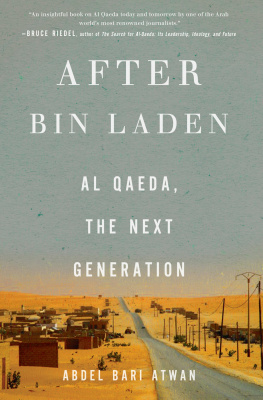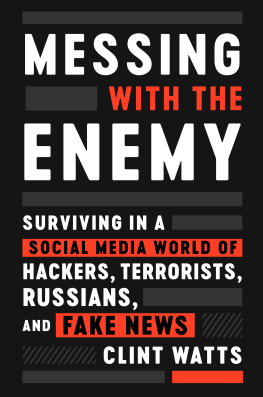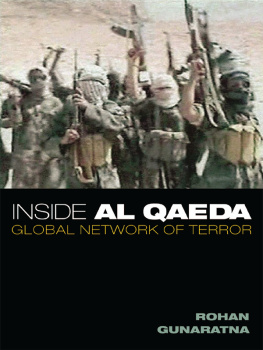
THE LAST REFUGE
YEMEN, AL-QAEDA, AND
AMERICAS WAR IN ARABIA
Gregory D. Johnsen

For my mother,
who read to me as a child
CONTENTS
I
RISE AND FALL
II
FORGETTING
III
THE NEXT GENERATION

C enturies ago, somewhere in the middle of the Arabian desert, an illiterate former shepherd gathered together his band of rebels and outcasts for some final words. Most of the men had broken with their families and tribesthe social glue of seventh-century Arabiato follow the former shepherd and his stories of an angelic revelation. Muhammads claims had scandalized much of Mecca, on Arabias western coast. Chased out of his hometown by an assassination plot, Muhammad had fled north looking for help. He had already dispatched some of his followers across the Red Sea into what is now Ethiopia, keeping only a handful of supporters by his side. Exhausted and on the run, it looked like the end for the small band of men who remained. Looking at the few who had followed him into the desert that day, Muhammad said, When disaster threatens, seek refuge in Yemen. If this failed, if Muhammad didnt survive, those were their orders. Yemen was the last refuge.
History, of course, turned around. Muhammads desperate flight north didnt fail. It was a success, the modest beginnings of an empire that would soon stretch across continents. That flickering moment of despair and doubt passed, but his words would remain, instructions for what to do in case of emergency. Muhammad was speaking to more than just the present; he was speaking to the future. Someday disaster would come and his followers would need a last refuge. Those were the men he addressed that day in the desert: the future generation who would flee to Yemen. His words were for them, whoever they might be.
FOR MOST MUSLIMS , Muhammads desperate order to flee to Yemen is apocryphal. But for others, the handfuls of men and women down the years who considered themselves the only true believers left, his instruction spoke to them and their situation. And for that, if for no other reason, it was believed. Faith trumped evidence.
Scattered around the world in isolated pockets and secluded villages, the small bands of believers never quite needed the refuge that Yemen promised. There was always another mountain hideout, another untouchable sanctuary where they could find safety. Kings and rulers, mortal men bound by time and space, had their limits. But by the end of the twentieth century, those ancient bonds were slipping. A global power had arisen that could strike anywhere in the world. Robotic drones fired missiles at their meetings, while warships and planes harassed them out of their homes and villages. More than 1,400 years after Muhammads battlefield speech, the moment had finally come. Surely, this was the disaster their prophet had foreseen. The men and women of the early twenty-first century were his chosen generation, and they needed a last refuge.
IN EARLY JANUARY 2009, several of these men gathered for a meeting in a tiny two-story safe house in the Yemeni highlands, just north of the capital, Sanaa. They came from all over the Arab worldSaudi Arabia, Egypt, and the Gulffrom Africa and south Asia. Within months, a handful of Americans and at least a few Europeans would join them. For such young men, they had surprisingly long histories. Nearly all of them had fought and failed elsewhere. Some had been imprisoned, locked away in some of the worlds darkest corners. In Iran and Saudi Arabia, Guantnamo Bay and Yemen, they had paid for their failures. In dank prison cells, the men had been tortured and interrogated, deprived of sleep and burned. But they had survived, and now they had fallen back on Muhammads last refuge.
The men in the safe house that day had come to Yemen in boats, smuggled across the Gulf of Aden by human traffickers, lost in the daily waves of refugees from Africa. Some of the Saudis had driven south, speeding across the invisible line in the sand that acted as an international border. Others had landed at Sanaa International Airport claiming to be Arabic students or tourists. At least one of them had, like Muhammads earliest supporters, ridden his camel to this latest jihad, crossing hundreds of miles of desert to reach the safe house. No matter how they arrived, they were all ready for what was coming.
Halfway around the world, President-elect Barack Obama was not prepared for what was about to happen. Sitting in a temporary office at the luxurious HayAdams Hotel next door to the White House, the new president was preparing to implement the changes he had promised during his campaign. At the top of his list was closing the prison at Guantnamo Bay. The detention facility had bothered him for years, harming Americas image abroad and splitting voters at home. Domestic courts picked away at its legal underpinnings while stories of torture spilled out of Guantnamos metal cages.
Although Obama didnt know it at the time, the handful of men meeting in the Yemeni safe house were about to force his hand. In the coming days, they would compel him to renege on his campaign pledge and, in the process, pose one of the most difficult questions of his administration: how could the US fight an agile and stateless enemy without yet another costly invasion that would only make the problem worse?
Obama came into office prepared to deal with wars in Afghanistan and Iraq, but hed spent little time on Yemen. In the early days of January 2009, Yemen was still a secondary issue, but it wouldnt stay that way. By the end of his first week in office, Obama would need an answer to the question Yemen and its militants posed, and he hadnt even started thinking about the problem yet.
A few days before Obamas inauguration ceremony, the handful of men in the dusty building staged their own coming-out party. It had none of the pomp of a major international event, just four men sitting cross-legged on the ground in front of a white sheet and a black flag. The rest of the world wouldnt hear about it until days later, well after President Obama had signed an executive order announcing his intent to close Guantnamo Bay. But the men in Yemen knew what they were doing. From their cramped desert hideout, using only a camera and a few laptop computers, they embarrassed the President of the United States and his Arab alliesthe Saudis and Yemeniswith a single video. Even the way they released the information was calculated to maximize its impact. First a teaser: a press statement posted on jihadi Web forums in the days leading up to the inauguration; and then, only after Obama was sworn in, the finished product.
THE NINETEEN-MINUTE video confirmed the worst fears of the US: someone who had once been in custody was now free and threatening to kill Americans. Said al-Shihri, a former Guantnamo Bay detainee from Saudi Arabia whom the US had released more than a year earlier, had rejoined al-Qaeda. Sitting on the ground in a black robe with a bandolier of bullets draped over one shoulder and a rocket launcher resting on the floor in front of him, he shook his finger at the camera. He was here, he said, to announce the merger of the Yemeni and Saudi branches of al-Qaeda into a single organization: al-Qaeda in the Arabian Peninsula. As he spoke, al-Qaeda technicians flashed his name, title, and internment serial number at Guantnamo, 372, across the bottom of the screen.
Next page













